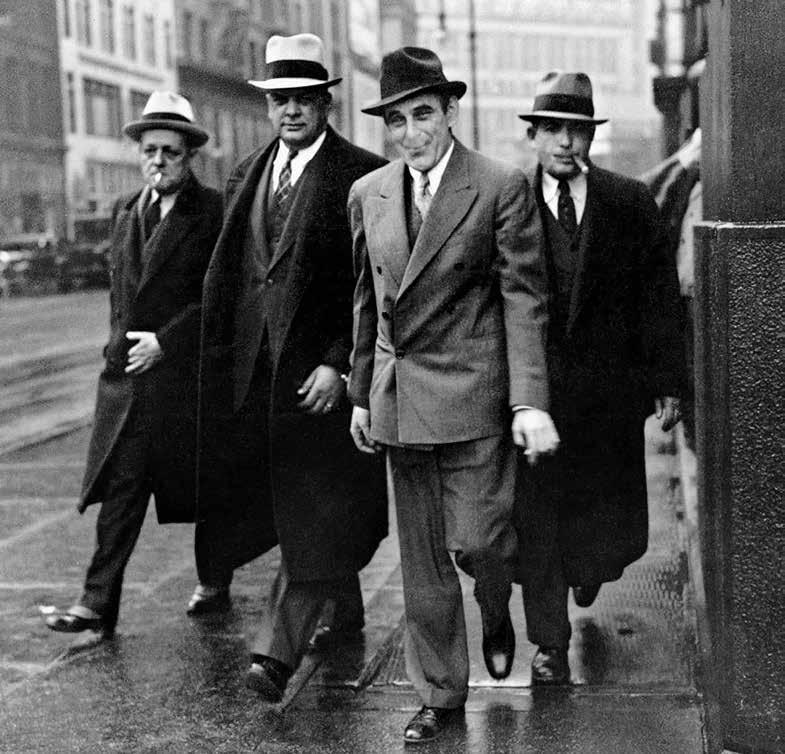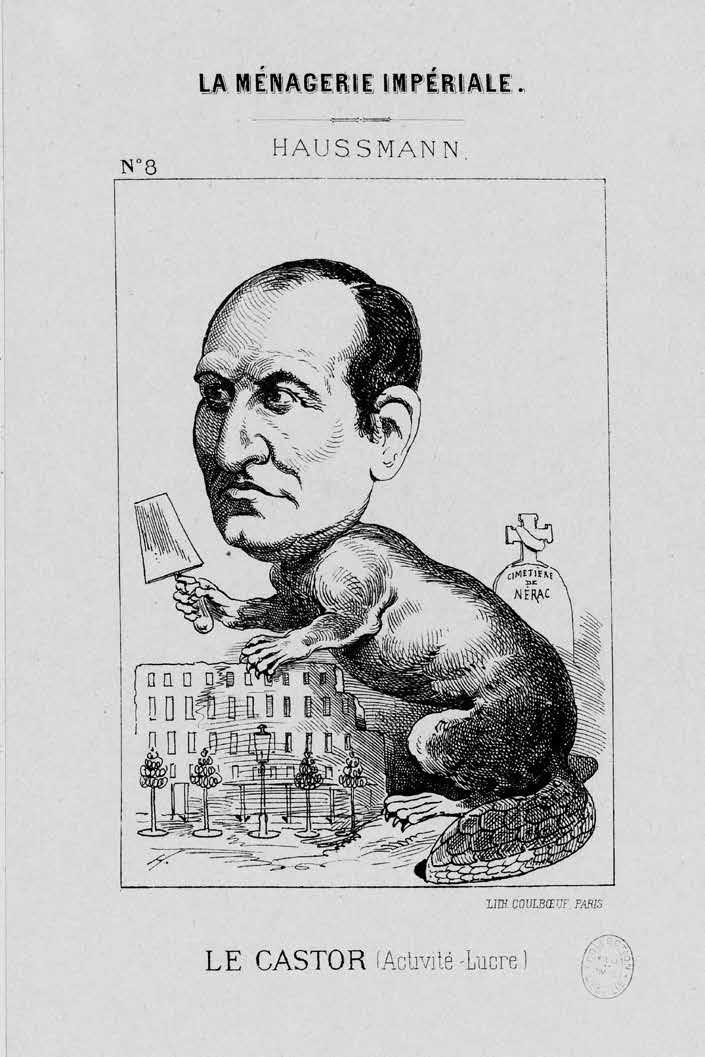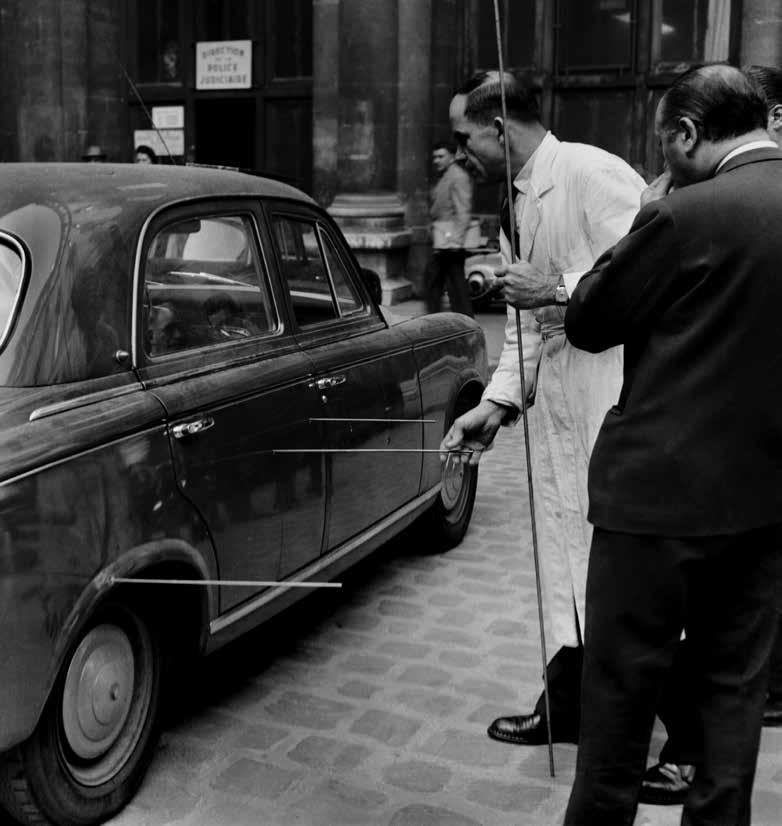
RIGHT BANK, WEST p. 15 PART 2
RIGHT BANK, EAST p. 83 PART 3
LEFT BANK, WEST p. 129 PART 4
LEFT BANK, EAST p. 179 PART 5 MONCEAU & BATIGNOLLES p. 261 ENDNOTES




RIGHT BANK, WEST p. 15 PART 2
RIGHT BANK, EAST p. 83 PART 3
LEFT BANK, WEST p. 129 PART 4
LEFT BANK, EAST p. 179 PART 5 MONCEAU & BATIGNOLLES p. 261 ENDNOTES


On All Saints Day 1940, Rose Valland, assistant curator at the Musée du Jeu de Paume, is not bringing chrysanthemums for her deceased relatives. No, the sadness she feels is of a completely different order. ‘Her’ museum, of all places, has been commandeered by the Nazis as a triage centre from which to despatch their looted art across the Third Reich. For Rose, art is her vocation, and she decides to conduct an important task: to compile an inventory of the stolen works so that – who knows – one day they can be returned to their rightful owners. She soon realises the immense risks involved. The slightest error could be life-threatening.
< Rose Valland with artworks that she helped recover.


Rose and jasmine are the dominant notes of the iconic perfume Chanel No5. But the most successful bottle in the world also contains some notso-floral accents, such as envy and greed, plus a hint of collaboration. It is a page that is often erased from the biography of the great couturier’s fragrance. From her headquarters at 31, Rue Cambon, the ‘Iron Lady of Perfume’ fights a long-running and malodorous battle against the Jewish entrepreneurial family, the Wertheimers.1 The majority stakeholders in Les Parfums Chanel since its inception are now the sole owners of the global Chanel empire. However, the Wertheimers came very close to losing their business to Mademoiselle Coco during the Second World War. Courtesy of the Nazis.
<


“Industry is a machine that runs without a regulator. It does not care what driving force it uses. Like a true Saturn of labour, industry devours its own children and lives only by their deaths.” Such words could easily be attributed to Karl Marx or Friedrich Engels, but surprisingly enough they were written by a rich, thirty-six-year-old prince – Louis-Napoleon Bonaparte, nephew of Napoleon – in an essay entitled Extinction du paupérisme [The Extinction of Pauperism]. He wrote the treatise from his prison cell in 1844 while serving a life sentence. At the time, no one viewed this dreamer-adventurer as the comet who, in just six years, would ascend from prisoner to people’s representative, president of the Republic and emperor of the French. But before all this could happen, the man who inspired the Second Empire must escape the heavily guarded Château de Ham.
“Allez montez, mon cher ami!” Napoleon tenderly lifts his nephew and straightens the boy’s uniform. Seven-year-old Louis-Napoleon Bonaparte is the son of Louis, the Emperor’s younger brother, and his wife Hortense. She, in turn, is the daughter of Joséphine de Beauharnais, the Emperor’s first great love and his first wife. The year is 1815. After escaping from Elba and reuniting with his army, Napoleon is back in the Palais des Tuileries in Paris. From whence the Bourbon king, Louis XVIII, has fled in disarray upon hearing the shocking news that ‘the Eagle’, as Napoleon is called, is at large. The Emperor is delighted to be reunited with his nephew. Little Louis-Napoleon gazes out of the window. A unit of the Imperial Guard marches past. It is a mere shadow of the Grande Armée but in the Emperor’s mind, victory over the enemy nations, the ancient kingdoms of Europe, is still within reach.
As he embraces the young boy, the Emperor’s heart bleeds. He pines for his own four-year-old son. His second wife, Marie-Louise of Austria, did not follow him into exile on Elba after his defeat in Leipzig but returned, with their child, to her imperial family in Vienna. Napoleon suffered disaster after disaster in 1813 and 1814. His Grande Armée was decimated during the Russian campaign, another 38,000 soldiers were lost at Leipzig, while 20,000 more were taken as prisoners of war. His first great love, the Empress Joséphine, had died, and Marie-Louise and his son are now living under enemy rule. Napoleon might have escaped Elba and returned to Paris, but emperors and monarchs throughout Europe are sharpening their swords in readiness for a final showdown with the Corsican. On 18 June 1815, Napoleon is defeated at Waterloo and exiled to Saint Helena, where he will die six years later. As Louis XVIII is reinstalling himself in the Tuileries upon his return from Ghent, where he had established a government-in-exile, the young Louis-Napoleon Bonaparte is en route to Switzerland with his mother. He will never see his uncle again. Yet the Imperial Guard’s parade is etched upon his memory. Politics runs in the family, and it isn’t long before it whets the appetite of the illustrious Emperor’s young nephew. At the age of twenty-two, Louis-Napoleon supports a conspiracy by the Carbonari, the secret society planning to install a liberal monarchy in Italy. He also joins the fight against the Papal States in Rome. But as soon as Austria despatches 20,000 soldiers to drive out the victorious revolutionaries, LouisNapoleon turns tail and beats a hasty retreat to Paris – the city from which the new bourgeois king, Louis-Philippe d’Orléans, has been calling the shots since the July Revolution of 1830 (which is why his reign is referred to as the July Monarchy). Orléans tolerates Louis-Napoleon’s presence in the city on two
conditions: that he is there only briefly, and that he stays incognito. Nevertheless, the Parisians soon get wind of ‘a new Bonaparte’. The young powerhouse is promptly exiled.
Louis-Napoleon is intent on causing a stir in the French capital; through a ‘march on Paris’, for example, just like his eminent uncle. He finds a friend and ally in the Duc de Persigny, his faithful right-hand man during his meteoric rise to the top.1 But their clumsy plan is derailed in Strasbourg when they, and other assorted adventurers, call for revolution at the barrack gates. “Soldats! Marchons contre les traîtres du pays!” [Soldiers! Let us march against the country’s traitors!]. The garrison springs into action: but only to arrest the bolshy prince. Persigny escapes. Thanks to the intercessions of Louis-Napoleon’s mother, Orléans releases the captive on condition that he heads straight for America and stays away from Paris. The prince pays dutiful visits to Rio de Janeiro and New York. But when he publishes a book from Switzerland a few years later, detailing his ‘political action’ in Strasbourg, the French government cannot contain its exasperation. Orléans even threatens to attack Switzerland if it does not immediately expel the firebrand. Louis-Napoleon won’t let it get that far. Despite accepting voluntary exile in London, he appears to have achieved his goal. In France, and Paris especially, there is renewed talk of ‘that new Bonaparte’. Practice makes perfect.
He resumes his plotting the moment he sets foot in the British capital. This time, he will incite a garrison in Boulogne-sur-Mer to attack Orléans. A local general with a sentimental attachment to the Emperor offers his support. LouisNapoleon sets sail for France on 5 August 1840 – full steam ahead – with an army of sympathetic Bonapartists under his belt, plus the ever-loyal Persigny. The ‘Edinburgh Castle’, supposedly hired for a cruise, is also carrying 100,000 gold francs. At the barrack gates in Boulogne, Louis-Napoleon reprises his theatrical stunt from Strasbourg. Astonished spectators are handed gold coins as they chant: “A bas Orléans! Vive l’empereur!” [Down with Orléans! Long live the Emperor!] But the rabble are chased onto the beach under a hail of gunfire from the Garde Nationale. Shot in the arm, Prince Bonaparte fails to reach his ‘war fleet’. Sentenced to life imprisonment, he is hurled into the cachot [dungeon]. From Le Journal des Débats in Paris to The Times in London, the press has a field day. And the French? Louis-Napoleon is yesterday’s news. They yearn for the return of their Napoleon’s remains from Saint Helena. By the end of that same year, he is solemnly interred in the Cathédrale Saint-Louis-des-Invalides by King Louis-Philippe d’Orléans and his prime minister, Adolphe Thiers.

It is April 1925. Picture, if you will, the chic Hôtel de Crillon on the Place de la Concorde, where six gentlemen are gathering to discuss a business deal of the utmost secrecy and sensitivity: the sale of the Eiffel Tower. The vantage point of their prestigious third-floor suite affords them a magnificent view of the pride and glory of the 1889 Exposition Universelle: a gigantic celebration in steel of the French Revolution’s centenary. Seated around the table we see five entrepreneurs representing prominent French scrap merchants. The sixth gentleman is a senior official from the Ministry of Postes, Télégraphes et Téléphones (PTT), the body that manages the Eiffel Tower. It is he who has brought this ensemble together. The sales pitch can now commence.

One evening in 1854, a dim glow illuminates one of the smaller windows in the roof of the Hôtel de Ville [town hall]. It is late, but Georges-Eugène Haussmann is still immersed in paperwork for an important meeting the next day. He is not in his large office but in a modest private study a few corridors down in the Hôtel de Ville. He rereads a paragraph: “Paris is an immense workshop of decay, where misery, plague and disease reinforce each other, where neither sunlight nor air penetrates the narrow alleys, where plants wither, and four out of seven children die within the year.”1

On 30 May 1914, the French motor racing driver Georges Boillot, the king of the steering wheel, is racing towards victory in the Indianapolis 500-Mile Race. But tyre trouble means that his fellow countryman René Thomas wins the prestigious American prize. Two months later, Boillot shoots out of the starting blocks at the Lyon Grand Prix. Revenge for Indianapolis! His Peugeot L76 – la torpille [the torpedo] – has no pity for the Mercedes of Christian Lautenschlager, the German who challenges him in vain. The French are confident of victory: Boillot already has two Grands Prix trophies to his name and his lead is now significant… until the final circuit, when black smoke plumes up from beneath his bonnet. Lautenschlager wins, on French soil. Less than a month later, the Germans are back, for a much bigger battle. Race circuits make way for trenches and the symbolic torpilles become real torpedoes. Miraculously, Paris is let off the hook: the German advance stops at the Marne, and that is partly thanks to Boillot.

After
First a decorated civil servant in the Vichy collaborationist regime, then a resistance leader. First a far-right militant, then leader of the ‘Union de la Gauche’, a leftist coalition. First an anti-communist, then an ally of the French Communist Party. First a supporter of French Algeria, then a standard-bearer for independence. First an advocate of capital punishment in the colony, then an abolitionist. An enemy of the Fifth Republic who later became its champion. Married to Danielle Gouze but simultaneously the author of 1,217 love letters to Anne Pingeot.1 In 1958, at the height of his ministerial career, the Algerian crisis unexpectedly conjures an old adversary back onto the political stage: General de Gaulle. Mitterrand takes a fall. He pulls out all the stops to clamber back up. Sometimes rather clumsily. It thus transpires that the man with a penchant for grandiose buildings such as La Grande Bibliothèque, La Grande Arche or Le Grand Louvre, also harbours one for Le Grand Guignol, money and women.

After the Second World War, the Parti Communiste Français (PCF) is as strong as iron. Not only is it the party of the Resistance, owing to its leading role in that underground organisation, but it is also the party of those executed by firing squad, owing to the heavy price paid by its members in that respect. At the same time, it has positioned itself as the party of reconstruction, the party of a French renaissance. In so doing, it has won the votes of hundreds of thousands of workers with dreams of earning a decent living once again. By engaging with themes such as anti-colonialism, anti-imperialism, world peace and, simply, the betterment of the masses, it has also had a magnetic effect on scientists, intellectuals and artists. One important convert to the cause is Pablo Picasso. The Party newspaper L’Humanité salutes the painter of Guernica and Les Demoiselles d’Avignon as: “Le plus grand des peintres aujourd’hui vivants dans le monde entier [The world’s greatest living painter].”1 From within the Party’s ranks, Picasso, who has already been through both a blue and a pink period, now finds himself caught up in a red one as well. It is not always a bed of red roses.
Picasso’s ‘red period’


“The executioners grab her from behind, throw her quickly onto the board and push her neck under the blade; the rope is pulled, the blade flashes as it falls, there is a dull thud, and already Sanson is grabbing a bloody head by the hair and brandishing it above the square. The crowd suddenly bursts forth with a wild ‘Vive la République!’” This is how Stefan Zweig described the beheading of Marie Antoinette on 16 October 1793 in his biography of the French queen.1 She falls beneath the blade of the novice Henri, son of Charles-Henri Sanson (1739-1806), the most famous executioner in Paris. He launches his son, the next member of the dynasty, quite literally on the shoulders of the unfortunate queen. Beheadings will continue in the country of human rights until 1977. It’s a good living for two executioner dynasties.